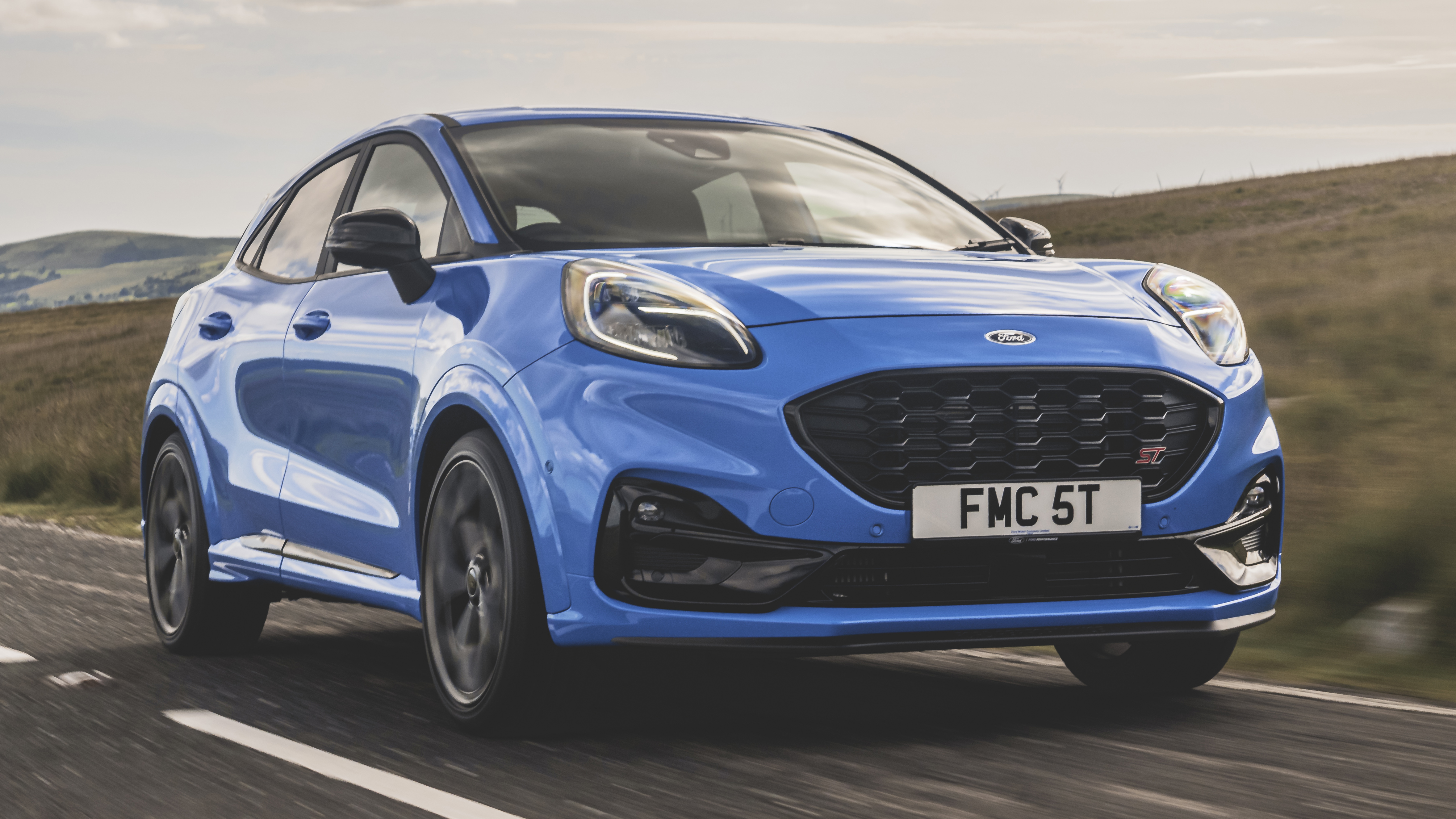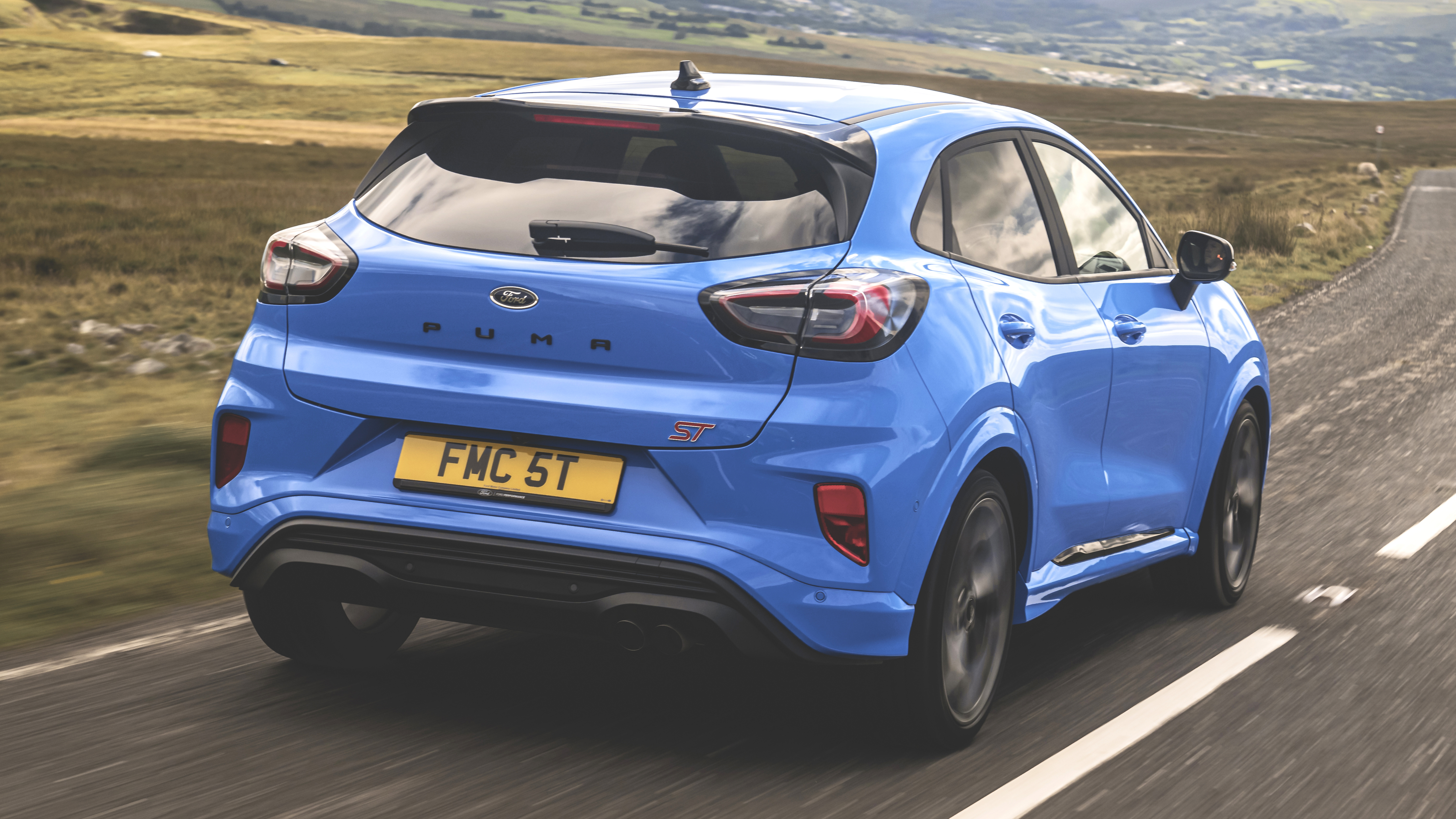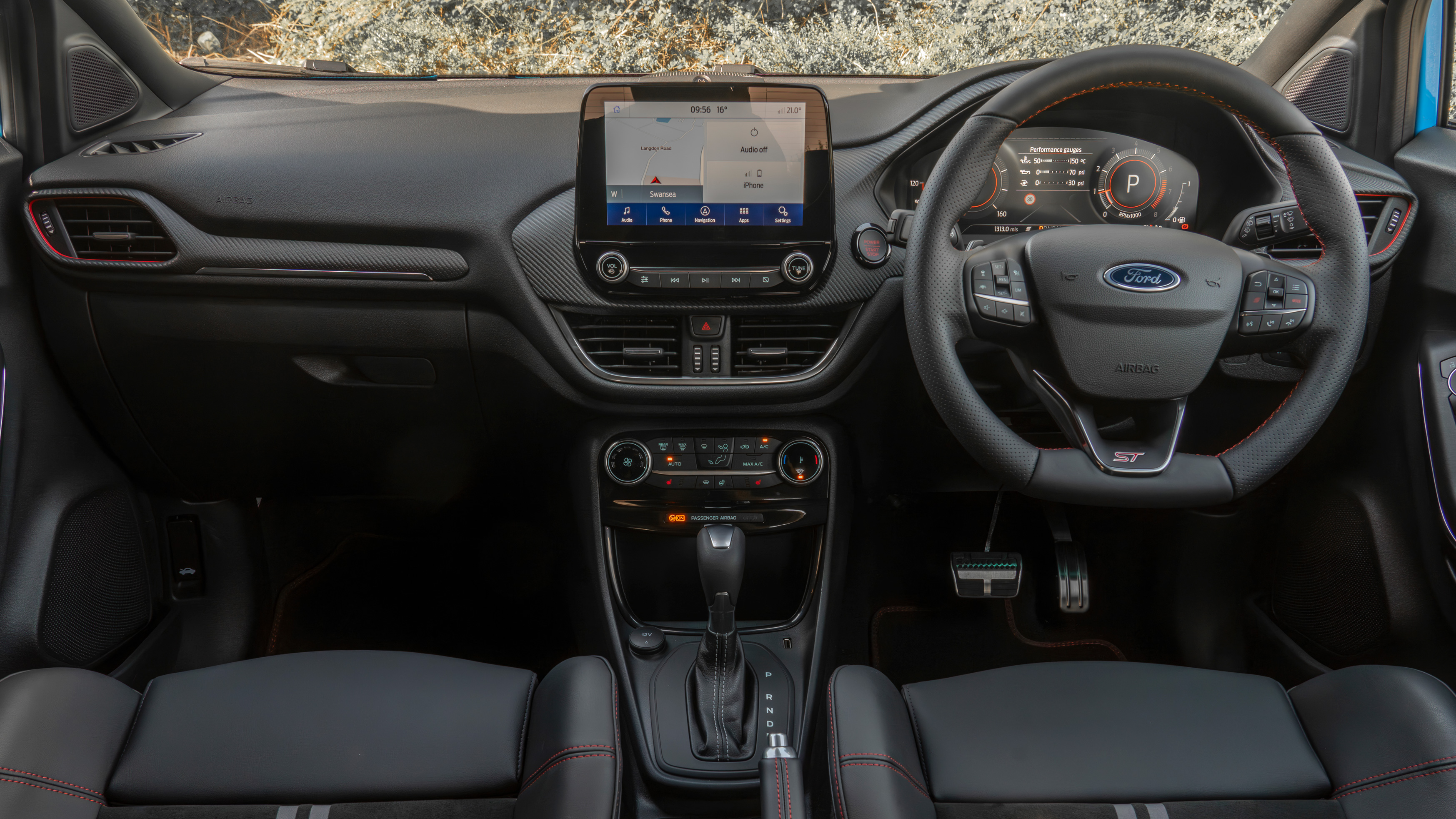
Driving
What is it like to drive?
How do you feel about performance versions of cars that, by rights, were never really meant to go all that fast? You either go with it, or it’s the worst idea since Olaf The Hairy accidentally ordered 10,000 battle helmets with the spikes on the inside.
We’re talking centre-of-gravity here, the bane of any crossover or SUV. But while the Puma’s floor is 3cm higher off the road than a Fiesta’s, it isn’t so lofty that it can’t do a convincing impression of a proper car. Before we get into the mechanical upgrades, a couple of observations: the Puma ST’s seats and driving position are fantastic. Before you even start the engine, there’s a sense that you’re in for the sort of treat a surprising number of (often much more expensive) cars have forgotten how to deliver. For an SUV, you really are perfectly placed here.
And the 1.5-litre engine is a corker. It’s as per the old Fiesta ST, although the porkier Puma gets 22lb ft of extra torque (236lb ft), peaking between 2,500 and 3,500rpm. 0-62mph takes 6.7 seconds.
The all-aluminium, 1.5-litre three-pot sends its 197bhp exclusively to the front wheels via a six-speed manual gearbox – an increasingly rare format – and uses a radial-axial turbo and integrated exhaust manifold to increase boost pressure while minimising lag. There are also roll-restricting engine mounts, and active exhaust valve tech to give the Puma ST a wee bit of note (as Northern Ireland’s fast Ford-loving fraternity would say).
What about the mild-hybrid you mentioned?
Ah yes, the new-for-2023 1.0-litre mHEV. It’s a less fierce entity for sure, with power and torque dropping to 168bhp and 183lb ft (0-62mph takes 7.4s), all in the name of lifting fuel economy from 43 to 45mpg. Yes, the gap on paper grows notably in the real world - especially at maximum effort - but was adding it to the line-up really worth the hassle? Usually we’d assume Ford was sweating over fleet emissions, but the difference there is negligible too. Hmm.
That’s not to discredit the hybrid entirely. Yes you lose the manual involvement and the seven-speed auto is nothing to write home about, but dialling back the power gives you more bandwidth to savour the Puma’s crisp handling. Like when Daredevil lost his sight but his other senses became heightened to compensate. And it still burbles and revs with a bit of (artificially enhanced) drama.
So does the Puma deserve the ST badge?
When all three cylinders are fully firing, it’s like a tall, slightly less frenzied Fiesta ST, one you could put the dog in the boot of, on top of the shopping (which could go in the aforementioned MegaBox). Which is to say, an extremely useful car that also happens to be highly entertaining.
Ford isn’t always at its best when it’s marketing driven – hello EcoSport – but its engineers are a world class act, no doubt about it. They understand how to set up the primary controls, and everything here has a measured, expensive-feeling weight to it. Then there are the modifications. The Puma ST’s steering rack is 25 per cent faster than the standard car’s, and uses a reworked front knuckle and shorter steering arm to hone the car’s turn-in. The result is wonderfully linear and communicative.
The rear torsion beam is 50 per cent stiffer than the standard Puma’s set-up (40 per cent stiffer than the Fiesta ST’s), and there are front and rear anti-roll bars. The mechanical limited-slip diff and torque vectoring ensure that the ST exits corners without collapsing into a wanton display of wheelspin or useless understeer.
Traction, in the dry at least, is seriously impressive, and it’ll get down the road plenty fast enough unless you’re a borderline sociopath. The various drive modes do the usual software tweaking across engine, traction control, steering and throttle parameters, and as usual ‘Normal’ mode is the best bet. ‘Track’ mode will let you turn off everything, but we’d respectfully suggest that both car and driver are suffering an identity crisis at this point. Braking is by 325mm discs upfront, and 271mm discs at the rear, with the system tuned for improved modulation and feel. Overall, it’s a harmonious bit of kit.
Any downsides?
The ride can feel a bit unrelenting over coarse or choppy surfaces; a bit bouncy. The ST uses what Ford calls ‘force vectoring springs’ in its rear suspension, which means that cornering forces follow a path directly into the spring for improved lateral stiffness. There are also bespoke bump stops. It keeps things extremely taut, perhaps a little too taut for its own good on some of the surfaces that pass for roads in the UK. You might need that battle helmet after all.
Do also keep an eye on the fuel gauge. If you drive the 1.5 like nature – and its manufacturer – intends, you’ll be lucky to see 25mpg. After one spirited cross-country session, we were getting 22.9mpg. Be warned.
Featured

Trending this week
- Car Review
BMW iX3






